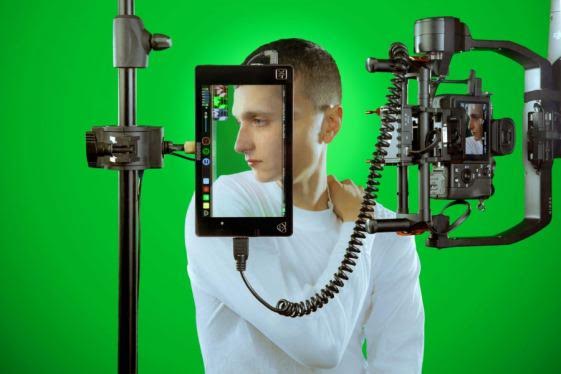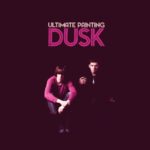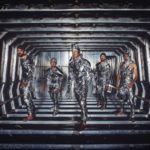From Kraftwerk to Daft Punk and beyond, throughout history pop has been endlessly fascinated with technology. Whether it’s recreating, inhabiting and representing its forms: shifting sounds and visuals, or rebelling against its creeping tide. Recently technology has begun to submerge our lives, from the preponderance of social media and mobile technology, the dominance of Apple technology to the shifting the modes of delivering music from digital downloads and streams; to flash releases online by artists with the name to just release it and let journalists scramble to keep up (Weeknd, Frank Ocean, Beyonce, for example).
Now there is another strain of electronic music that takes the sounds of electro-pop, dance music, Detroit techno, jazz, and the sleek futuristic forms of R&B production popularised by Timbaland in the noughties, to forge a very futuristic bricolage of techno-pop music. A form of hyper-real, techno-pop sound wired into the virtual reality of 2016, their use of smart vocal samples and deconstructed instrumentation inhabits, slices up and represents the frameworks of social media, the internet our circuit boards and the aural tech sound collages that undulated below the everyday. To craft a sound that may point the way to the future. In that number are Holly Herndon, Arca, and my favourite recent disciple Motion Graphics.
With long players like ‘The Man-Machine’ (1978) and ‘Computer Love’ (1981), German synth pioneers Kraftwerk not just innovated a new kind of electronic music, they inhabited the technology to bring their themes to light. Naming themselves the robots, they dressed like mechanoids, rarely gave interviews, they created a mystery and distance with an audience anxious to fix the Rubix cube. Their use of hand-held Dubreq Stylophone, the punctuated singing was more in common with an automated machine than any soul song, yet it still possessed an awareness of the history of pop music and their surrounding emergence of the first forms of computer technology in the 1970s and 1980s. Take ‘Computer Love’, a song about falling love with your computer and how hopeless it makes you feel, prescient in an era where social networks like Facebook and twitter dominate some people’s lives.
In early 1980s Detroit, techno-dance music emerged from the African American community: a vibrant mixture of Chicago house, funk, electro, and electric jazz. Much like nascent hip-hop of Grandmaster Flash and Afrika Bambata, it was influenced by the records of Kraftwerk, Giorgio Moroder, and Japanese techno innovators Yellow Magic Orchestra who embraced the innovations of the Japanese product market with Walkmans and the rise of the video game console.
One of the main exponents of the Detroit Techno scene was Joey Beltran, whose use of minimal beats: gave a platform to his motifs of synth loops, samples, and vocal fragments.
Britain’s synth wave also borrowed heavily from the Kraftwerk traditions and adding in the British sensibility of post-punk. First emerging on top of the pops, Gary Numan looked like an android from another planet. With his ominous electro-pop songs about technology, cars and ‘Are Friends Electric’ is influenced by the dystopic sci-fi works of JG Ballard and the movie Bladerunner. “I had Asperger’s and saw the world differently. I immersed myself in sci-fi writers: Philip K Dick, JG Ballard. The lyrics came from short stories I’d written about what London would be like in 30 years,” says Numan. “These machines –”friends” – come to the door. They supply services of various kinds, but your neighbours never know what they really are since they look human. The one in the song is a prostitute, hence the inverted commas.”
Numan’s chart success helped the synth wave that was already bubbling under the surface in the years prior in the north of England reach the ears of the mainstream too. From Cabaret Voltaire, Human League and OMD to New Order in the 1980s who took their influence from the works of Giorgio Moroder and the discos they visited in the early ’80s. As an example here’s New Order‘s awesome ‘Bizarre Love Triangle’ (1996) that takes the Detroit Techno sound and merges with a precise Moroder-like beat pattern, fluttering synth lines, Peter Hook basslines and garnishes with Bernard Sumner’s knack for a bitter sweet melody and love-lorn lyric.
In the ’90s, Icelandic artist Bjork inhabited a otherworldly place between the naturalistic and robotic. Her super album ‘Homogenic’ was a study in fractured electronic sounds, found samples, string sweeps and eruptions of emotion. In the video for the delicious ‘All is Full of Love’ director Michael Gondrey takes it one step further, as Bjork and her lover inhabit robotic mechanoids being upgraded for an embrace and kiss.
At the start of the millenium, French duo Daft Punk became robots, literally, in all of their public appearances after their first album ‘Homework’. Their post modern electronic dance music was genre hopping and influenced by the jukebox of musical history but is also reflective of the world around us. Take the wonderful ‘Around the World’ a thumping electro – house anthem with a groundbreaking body-popping video of formation dancing.
The squelchy synths augmented by a thumping beat that slides effortlessly, its insidious computerised, vocoder of the refrain buries itself in your head, harking back to the work of their forefathers Kraftwerk.
So to the new wave (forms), last year Holly Herndon released a superlative glitch-pop that’s avant forms and vocal snatches are riven with bleeps and blips, and a stop start fracturing of rhythmic structures. Sound pads, synths, Holly’s samples, and beats are cut up and replayed and reproduced as she distills emotional memories. In the video for ‘Chorus’, Holly becomes a virtual reality figure in a virtual world a glimpse of our futures? And redolent of the kind of sickeningly over helpful tech help now used by Amazon and other tech companies. Is this the future for human contact through a screen? In the film ‘Her’ the actor – played by Joaquin Phoenix – ‘falls in love” with his own operating system.
Motion Graphics, aka Joe Williams, recently released self-titled debut recently, was created over a two-year period between NY, LA, & Baltimore. He uses “custom randomized software instruments, Williams’ mimics the erraticism of the Twitter timeline and the aggregated news feed, while incorporating elements of techno-pop and jazz, sequenced through the superhuman capabilities of a computer.”
Reflecting and inhabiting the sound and visuals of the technology that surrounds us, plugged into the mainframe, Williams set out to make a techno-pop record that reflected the past and peered into the future. “Of the sort Ryuichi Sakamoto’s Yellow Magic Orchestra or Kraftwerk had made in their time. However, Williams was not interested in simply emulating the sounds of those classic groups, but rather, like those groups, he aimed to make music that would reflect the technological realities of his time. The oblique rhythm of the Twitter timeline and the alert sounds from the menu systems of touchscreen devices.”
Plugged into the mainframe our auteur Joe Williams’ manifold influences span the likes of ’80s-era Japanese techno-pop and the jazz sounds of ECM Records. ‘Anyware’ builds upon each hyperactive synth motif, horn burst and sample sweep, vocal stutter in the way classical music forms do, to forge an complex databank. Only this is the sound of a spluttering spaceship skitters across the galaxy, indeed it was written by Williams on an Amtrak as an aural representation of Grand central terminal. “MIDI sequencing new tracks, moving between cities in rapid transit. This area is where I see the landscape of ‘Anyware’ living,” says Williams.
The video is similarly futuristic created by CULTURESPORT: “The album art jogs inside a dancing bear DNA sequence. It doesn’t run out of breath, like the hyper patterning of the brass and woodwinds.”
The extraordinary ‘Houzzfunction’ coughs and splutters up fragments of rhythm, beats, and samples underscored by key board triggers that sound like hundreds of slinkies stepping down hundreds of flights of stairs. The sound of the firing circuits of Wal-E, fragments of jazz records, Timbaland’s jabs and William’s vocals that sketch scenes in a nu-soul vacuum.




